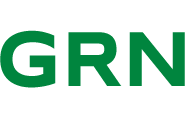Europe's district heating sector stands at a decisive moment of transformation. Serving nearly 80 million citizens across 19,000 networks, district heating and cooling (DHC) systems have become central to Europe's ambitions for energy security and climate neutrality. In 2023, the continent's heat supply reached 548.6 TWh, with 44.1% already sourced from renewables and recovered waste heat clear evidence of accelerating decarbonization.
Decades of reliance on imported fossil fuels have exposed Europe's vulnerability to energy shocks, pushing policymakers and industries alike to seek cleaner, more resilient alternatives. Industrial heat pumps are now emerging as one of the most promising solutions, enabling large-scale integration of renewable and waste heat into district energy systems. Beyond reducing emissions, they enhance local energy independence and help stabilize energy prices two priorities emphasized by recent crises.
In this article, we will explore the latest findings from Euroheat & Power's "Market Outlook 2025" report, examining how industrial heat pumps are reshaping the European district heating landscape. We will focus on:
- The heat pump revolution in district energy
- Market data & current landscape
- Complementary technologies: e-boilers & flexibility
- Waste heat recovery: the untapped resource
- Geothermal
- Market outlook 2030: growth projections
- District cooling: the overlooked opportunity
- Policy drivers & financing
The heat pump revolution in district energy
Unprecedented growth: heat pumps lead renewable integration
Across Europe, industrial heat pumps are rapidly becoming the foundation of district heating decarbonization. In 2023 their contribution reached 6,489 GWh, marking an impressive 44% increase year-on-year, which confirms the technology's maturity and growing competitiveness as utilities seek to reduce fossil fuel dependency and meet EU climate objectives.
The potential for further expansion is impressive. 84% of Europe's population is connected to sewage networks, offering an estimated 150 TWh/year of recoverable heat, while data centres could supply an additional 200 TWh/year, making the harnessing of these urban heat sources crucial for achieving the EU's renewable energy targets and improving energy resilience.
Germany is currently setting the pace, with over 50 large-scale heat pump projects in planning or construction, which together represent approximately 900 MW of thermal capacity, of which 80 MW are already operational. Forecasts indicate this figure could climb to 6 GW by 2030, reflecting the country's ambitious drive toward low-carbon heating.
As heat pumps increasingly integrate with district energy systems, they not only supply renewable heat but also support power-to-heat flexibility absorbing excess electricity during low-price periods and converting it into affordable, clean thermal energy.
Technology fundamentals
ndustrial heat pumps elevate low-temperature heat from various ambient sources such as rivers, lakes, shallow geothermal, and wastewater to the higher temperature levels required for district networks. By capturing and upgrading this thermal energy, they transform otherwise wasted resources into a steady, decarbonized heat supply.
A leading example is the RheinEnergie project in Cologne, one of Europe's largest river-water heat pump installations. The 150 MW system, drawing energy from the Rhine River, will supply around 50,000 households with heat by 2027. Using a natural refrigerant and operating up to 110°C, it demonstrates how advanced heat pump technology can deliver city-scale renewable heating while supporting RheinEnergie's goal of climate neutrality by 2035.
Market data & current landscape
Over the past five years, Europe's district heating networks have expanded by 9.7%, adding around 14,000 km of new distribution infrastructure and confirming the sector's strategic role in the transition toward low-carbon energy systems. Germany and France led this growth, extending their networks by 6,754 km and 1,551 km respectively, while more mature markets such as Denmark and Finland continued to grow steadily, adding 3,000 km (10%) and 1,038 km (6.7%). In 2023, total installed capacity remained stable at around 309 GWth, reflecting sustained investment despite slightly lower heat demand due to mild weather and energy efficiency improvements. Capacity and connectivity vary significantly across Europe: Poland leads with 42 GWth, followed by Germany (40.7 GWth), the Czech Republic (37.9 GWth), Denmark (27.4 GWth), France (26 GWth), Finland (25 GWth), and Austria (12 GWth). Expanding household connections continue to demonstrate the vitality of these systems Germany's district heating served 6.4 million households in 2023, adding 31,200 new buildings, while France connected an additional 2,200 buildings, marking 6% annual growth. Looking ahead, network expansion is expected to accelerate further under EU climate and energy policies such as the Fit for 55 package and through the increasing integration of renewable and waste heat sources, enhancing the resilience, sustainability, and decarbonization potential of Europe's district heating sector.









